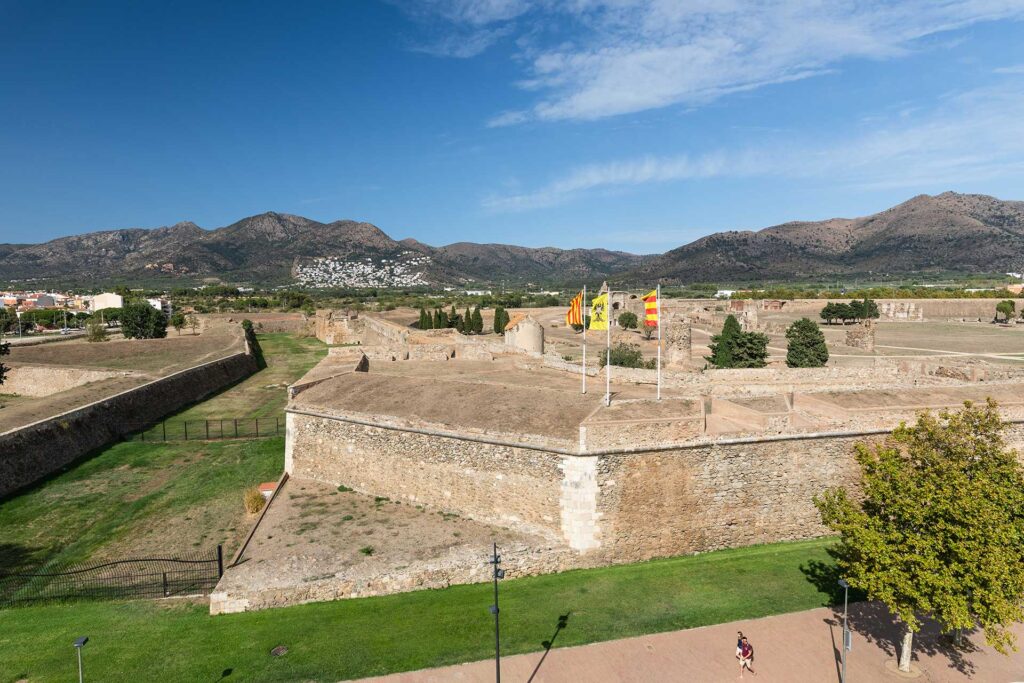
The Citadel is a cultural asset of national interest. It is a fortress constructed by the engineer, Luis Pizaño in 1545 and finished by Calvi in 1553. It contains an archaeological site which conducts continuous research and where visitors can learn about the different historical occupations of the site through the remains preserved since the 4th century BC, the period in which the Greek colony of Rhode (Roses in its Greek form), until the 20th century established themselves there. Inside the citadel, part of the old medieval walled area of the city of Roses is preserved, which was used to build the new citadel. The site consists of the remains of the walls and towers both from the first defensive enclosure from the late-medieval period and from the later reforms and extensions of the late-medieval period. With regards to the first enclosure, the remains of the Benedictine basilica of the Santa Maria de Roses Monastery and the elements that accompany it are also preserved.
The Citadel of Roses is one of the most impressive fortifications in the area. Above all, it marks Roses coming to exist, telling its thousand-year-old, ever-changing history, including the military sieges it underwent. Specifically, the engraving shows the siege it suffered from the French army’s attack during the French War in the early 19th century. A battle that took place from 1808 and ended up with the citadel being controlled by the French until 1814. This engraving shows how the French army bombed the Citadel, which can be seen in the background, from their ships. It is preserved in the Empordà Museum in Figueres.
Literary Text
A Roses m'agradava de pujar fins a la Font dels Miquelets, a mig aire del turó de Puig Rom. Allà, des de sota uns pins —que avui ja no hi són— podia veure's, com en un panorama, tot l'Alt Empordà. En primer terme, a la vora del mar, el poble de Roses i, arrencant de Roses, la corba perfecta, com d'una petxina, de la platja, la cinta de sorra que arriba fins a Empúries. El golf tancat, des d'on jo el mirava, per la Punta de la Poncella, amb el castell romàntic en ruïnes; per l'altre costat, més lluny, els espadats de Montgó i el fermall de les Illes Medes. A la dreta, cenyint el tros de la plana de Roses, el puig de l'Àguila i Sant Pere de Roda.
Dins UNA INTERPRETACIÓ DE L’EMPORDÀ, de Carles Pi Sunyer
This text comes from the Literary Atlas of the lands of Girona, coordinated by Narcís Jordi Aragó and Mariàngela Vilallonga and published by Girona Provincial Council in 2003.
Location
-
Avinguda De Rohde 35, 17480 Rosas, Provincia de Gerona, España


Add a review